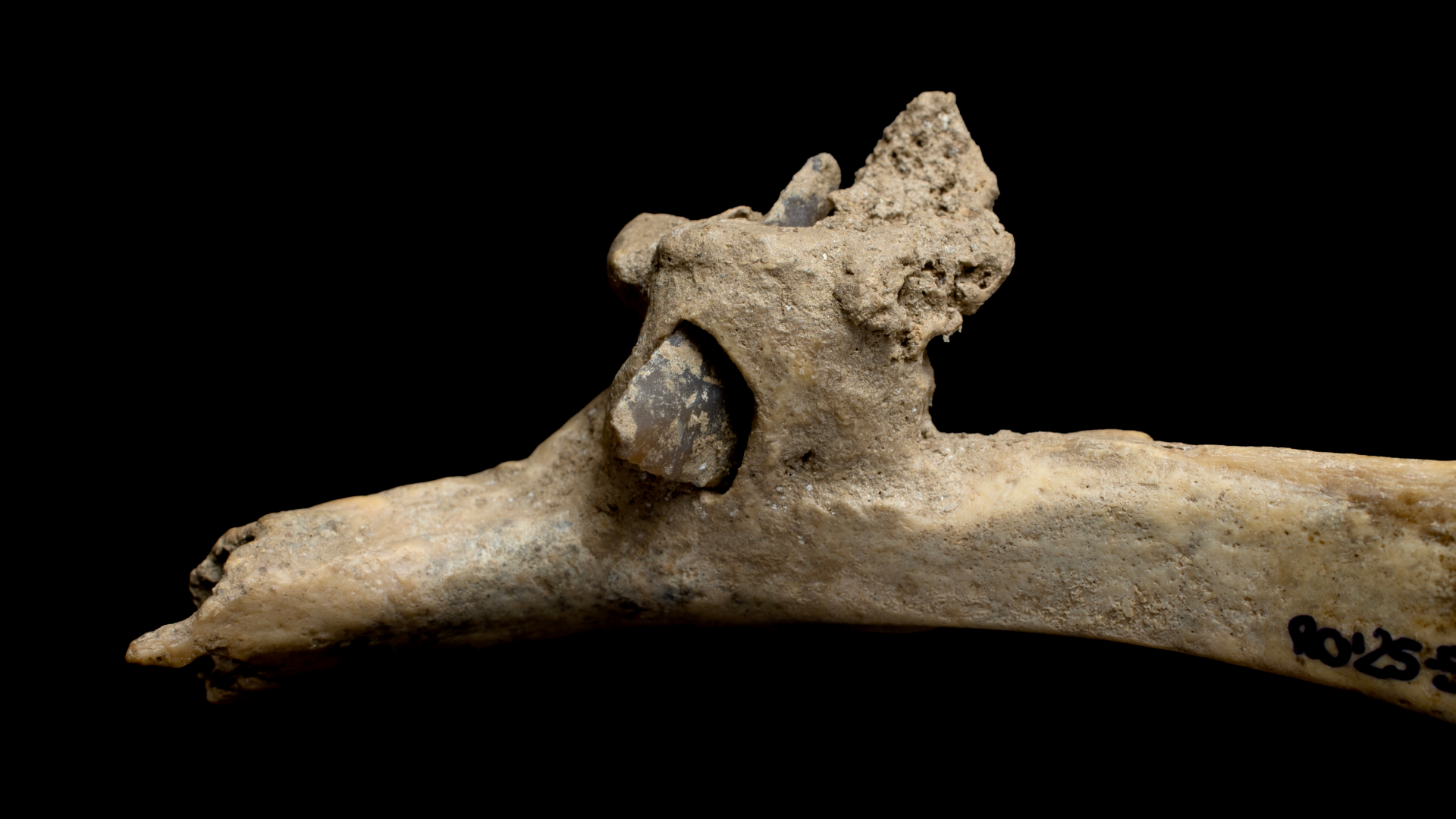4,000-year-old human rib discovered high in the Pyrenees still has an arrowhead from a brutal attack
A human rib discovered high in the Pyrenees suggests that someone survived a shot in the back several millennia ago.

A 4,000-year-old human rib pierced with a flint arrowhead reveals that a violent attack unfolded high in the Pyrenees of Spain during the Early Bronze Age.
But the brutal trauma wasn't lethal, research finds. The individual survived, with the bone healing around the projectile injury, meaning they lived the rest of their life with the flint arrowhead embedded in their rib.
Archaeologists found the person's bone during recent excavations at a prehistoric burial site known as Roc de les Orenetes, in northeastern Spain, according to a July 8 statement from IPHES — the Catalan Institute of Human Paleoecology and Social Evolution.
The injured person — whose sex and age at death have not yet been reported — appeared to have been shot from behind, according to the IPHES statement.
Excavations have been ongoing at Roc de les Orenetes in the Catalan Pyrenees since 2019. Led by Carlos Tornero, a prehistoric archaeologist at the Autonomous University of Barcelona, excavations at the cave site have produced more than a thousand human bones so far, and carbon dating places the burials at around 4,100 to 4,500 years ago.
In a study published in the American Journal of Biological Anthropology in 2024, bioarchaeologist Miguel Ángel Moreno of the University of Edinburgh, along with Tornero and colleagues, detailed their analysis of the human skeletons recovered from the Roc de les Orenetes cave between 2019 and 2021.
Related: Elite Celtic warrior had healed arrowhead injury in his pelvis, 3D bone analysis reveals
Get the world’s most fascinating discoveries delivered straight to your inbox.
The researchers determined that at least 51 people of various ages and both sexes were buried in the Roc de les Orenetes cave. At least six people were involved in deadly fights, they wrote in the 2024 study.
The wounds identified in this previous analysis were mostly located on the upper body, particularly the upper limbs and ribs, the researchers noted, and different weapons and raw materials appear to have been used to inflict the injuries. In one case, a person's forearm had been amputated.
"This evidence represents recurrent violent behavior and evidence of interpersonal violence located at the highest altitude of the Pyrenees" — 6,023 feet (1,836 meters) above sea level — the researchers wrote. Even in the most rugged geographic conditions, small-scale conflicts clearly arose and resulted in injury and death, they noted.
The newly discovered rib with the embedded arrowhead will now undergo X-ray microtomography analysis, according to the IPHES statement, as well as chemical and DNA analyses, to learn more about the lives and deaths of the people buried in the Roc de les Orenetes cave four millennia ago.
Human evolution quiz: What do you know about Homo sapiens?

Kristina Killgrove is a staff writer at Live Science with a focus on archaeology and paleoanthropology news. Her articles have also appeared in venues such as Forbes, Smithsonian, and Mental Floss. Kristina holds a Ph.D. in biological anthropology and an M.A. in classical archaeology from the University of North Carolina, as well as a B.A. in Latin from the University of Virginia, and she was formerly a university professor and researcher. She has received awards from the Society for American Archaeology and the American Anthropological Association for her science writing.
You must confirm your public display name before commenting
Please logout and then login again, you will then be prompted to enter your display name.
